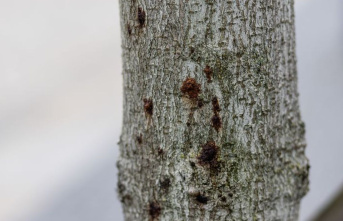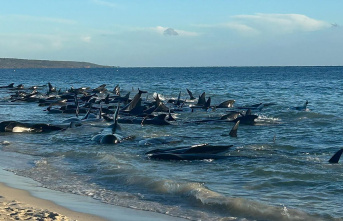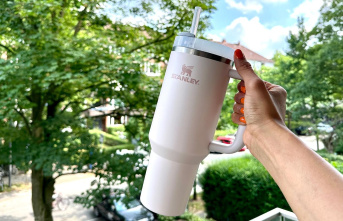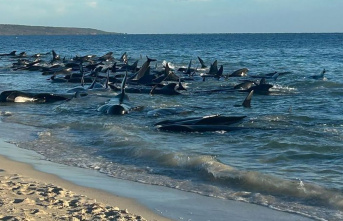When the first news reports about the earthquake in the Osaka region in southwestern Japan appeared on Tuesday, January 17, 1995, the full extent of the catastrophe was not yet known. Initially, there is talk of three dead and 20 injured. But the authorities correct the number of victims upwards almost every hour. 112 dead, at least 597 dead, then more than 1800 dead. On the second day, the number keeps increasing. On Wednesday there is already talk of more than 3,000 dead, on Thursday probably 4,000. About a week after the disaster, the number of dead has risen to more than 5,000, and around 100 people are still missing. In the end, a total of 6,434 people die in the disaster and more than 36,000 are injured. More than 100,000 houses are destroyed, 400,000 other buildings are damaged.
Japan is one of the most active earthquake zones. Four large tectonic plates meet beneath the island nation. Every year the country experiences several thousand earthquakes. Therefore, the scientists at the Osaka earthquake observatory, around 30 kilometers east of the center of the port city of Kobe, are not concerned when small earthquakes occur the day before the catastrophe. Earthquake expert Toshio Arimoto, who was on duty that night, later recalled in a TV documentary: "It was a national holiday and I felt like I was on vacation. Nobody was expecting anything out of the ordinary." But at around 6:26 p.m., his quiet work and that of his colleague are suddenly interrupted. An earthquake with a magnitude of 3.6 activates the sensors of the measuring devices. 23 minutes later there is another earthquake with a magnitude of 2.5. The epicenter is 15 kilometers south of Kobe. Another one follows. This measures 1.5 on the Richter scale. At 11:49 p.m., a fourth tremor shook the region. Then there is silence for several hours. Till the next morning.
At around 5.46 a.m. there was another earthquake on the island of Awajishima, not far from the mainland, in the bay off Kobe and Oska. But this time the scale is much larger. The epicenter measures 7.2 on the Richter scale. The tremors are violent. What nobody suspects: after the earthquake hits the northern tip of the island, a previously unknown rift rips open nearby. The quake spreads along this rift at 9,000 km/h and races towards Kobe, about 15 kilometers away, where the rift breaks directly under the city. As experts later find out, the force corresponds to that of a 65-kilo atomic bomb. Houses and road bridges collapse. Local trains derail. More than 170 fires are caused by downed power poles and leaking gas lines. Entire streets go up in flames. The 20-meter-wide Hanshin city highway, which stands on concrete stilts for a length of around 160 kilometers and runs for several kilometers through the city of Kobe, starts to sway. Finally, it collapses completely over a length of about 500 meters. The driver of a coach, in front of whom the road suddenly collapses, remembers: "I thought we were about to fall and I was terrified." The front wheels hang over a 15 meter drop. The driver helps the three passengers on the bus out and gets to safety.
The earthquake bursts many water pipes. The fire brigade is helpless in the face of the fire. The rescuers have to pump the water directly from the sea, which takes a frustratingly long time. In the next few days, more and more new fires break out in the city, which is now in ruins. The supply of electricity, gas and water is largely interrupted and public and business life in the region are practically paralysed.
The Kansai region with the megacities of Osaka, Kyoto and Kobe is not only the second largest conurbation in Japan, but also the industrial engine of the Asian economic power. But now numerous retail shops and department stores will remain closed there in the coming days and weeks. Steel, auto, chemical and electronic industries in Osaka, Kobe and other places are also affected. The carmaker Daihatsu has to temporarily limit production. Kobe steel shuts down three blast furnaces immediately after the quake. Kawasaki steel is forced to halt operations at its plants in Kobe and Nishinomiya due to a lack of electricity. For the same reason, a Nippon Stahl plant is idle. At the Kirin Brewery, 120,000 crates of beer, half of the inventory, are destroyed by the earthquake. The loss corresponds to about ten percent of the daily turnover. Production is suspended. Three out of five factory buildings at the tire and rubber manufacturer Sumitomo-Rubber in Kobe have collapsed. Mitsubishi Electric cannot work because of the damage in five plants. Matsushita Electric Industrial Co. stops manufacturing gaming devices in Kobe due to a lack of electricity. The total power failure also paralyzed the electrical controls for water temperatures and the oxygen supply in the fish tanks in the aquarium in the zoo. 1500 South American piranha predatory fish die, sharks and rays also die. In the old imperial city of Kyoto, too, the tremors caused a great deal of damage to temples, Buddha statues and other national cultural and artistic treasures.
The severe earthquake in Kobe lasted around 20 seconds, but these were enough to reduce the city to rubble and ash. Due to the severe damage to the infrastructure, the clean-up work is making difficult progress. Icy rains also complicate the search for missing persons. In addition, as a result of the disaster, the city is in danger of drowning in garbage, since only one of the five garbage disposal plants is still working. About a week after the earthquake, more than 800,000 households still have no water or gas. Above all, the damage on Port Island, an artificial island off Kobe, is enormous. Because the ground has sunk dramatically here in the port and the concrete walls of the docks have slid into the sea over a distance of nine kilometers, the important port facilities are particularly badly damaged and have to be shut down for two years. Losses in the commercial sector vital to the city amount to approximately $40 billion.
The death toll is greatest in the traditionally built-up suburbs and neighborhoods of Kobe. Almost 5000 people die here. The Japanese wooden buildings, built with heavy roof tiles on simple struts and walls made of plaster and bamboo, collapse like houses of cards. They become a deadly trap for the residents, most of whom are inside at this early hour. According to estimates, ten percent of the victims die because they are trapped and injured and have to wait too long for help.
More than 300,000 people have to be housed temporarily in emergency shelters in schools, sports halls, public buildings and tent cities. Even three years after the quake, despite all the reconstruction efforts, around 45,000 people in the region are still living in emergency shelters.
The government and authorities are later accused of having acted much too slowly and insufficiently. According to experts, communication problems meant that, among other things, the military arrived very late at the scene of the accident. Enormous problems also caused the coordination of the relief efforts. However, this is contradicted by a study later published by the Hyogo Prefectural Health Department in Japan, which is based on autopsies on 3,649 fatalities. It proves that more than 70 percent of the victims survived the severe earthquake for less than fifteen minutes. They suffocated under rubble or were mortally injured by furniture, ceilings and roof structures of their collapsing houses. By the late evening of the first day, 95.9 percent of those buried were no longer alive.
Overall, the earthquake caused an estimated economic loss of around 110 billion US dollars. The authorities are using the latest earthquake-proof technology to rebuild the city. The harbor alone will be redesigned for $6.8 billion, with the docks' side walls getting much deeper foundations. The traditional wooden houses will be replaced by modern ones with strong walls and light roofs, and the $3 billion elevated expressways will be secured with steel-reinforced piers.
A festival of lights is held in Kobe every year to commemorate the victims of the severe earthquake, and is attended by around four million people.
Watch the video: The images are reminiscent of science fiction films: A massive, rotating construction is enthroned on the lunar surface. A team from Kyoto University and a Japanese construction company have published plans for residential developments on the moon.
Sources: National Geographic, ETH Zurich, FAZ archive, with archive material from DPA











